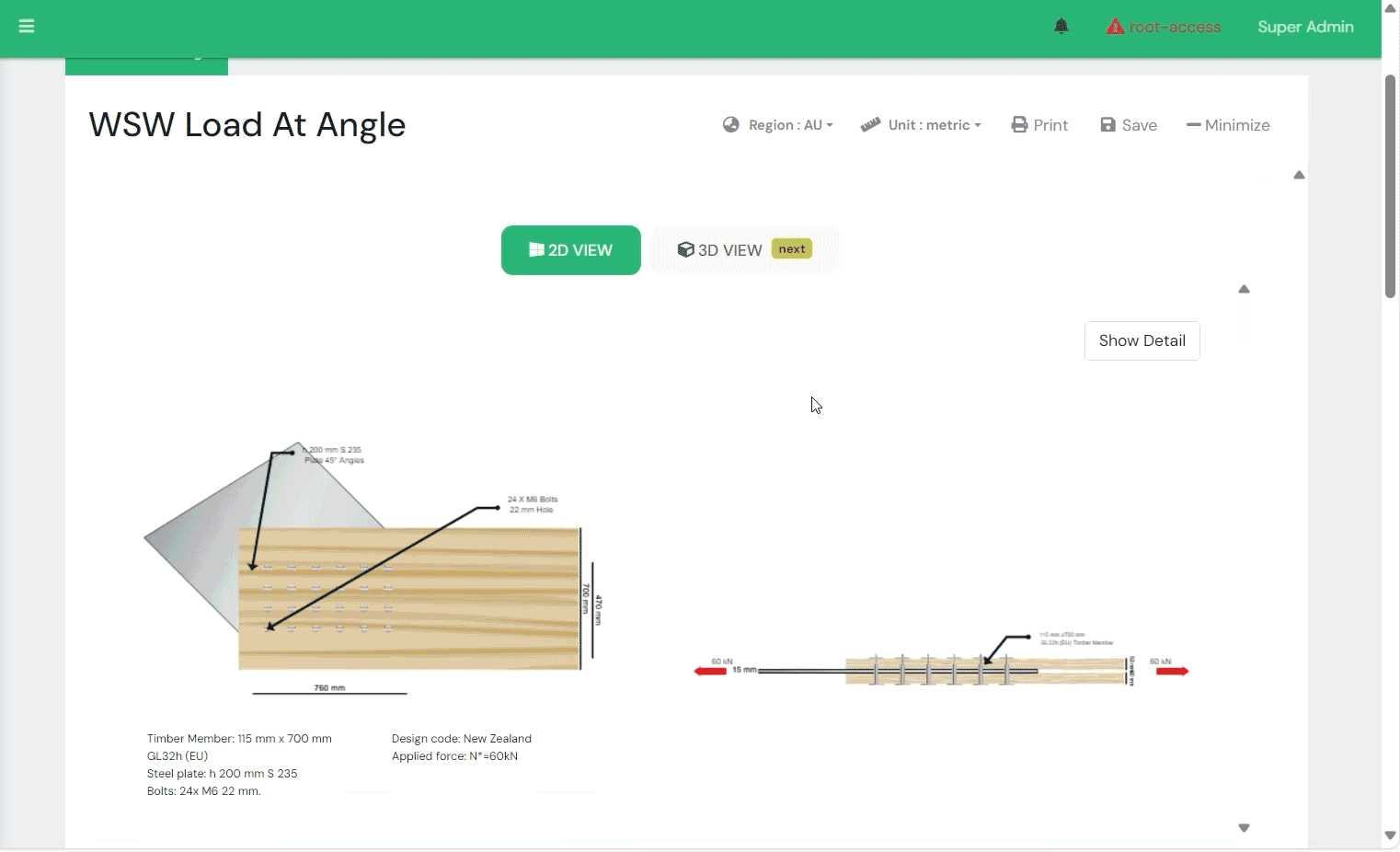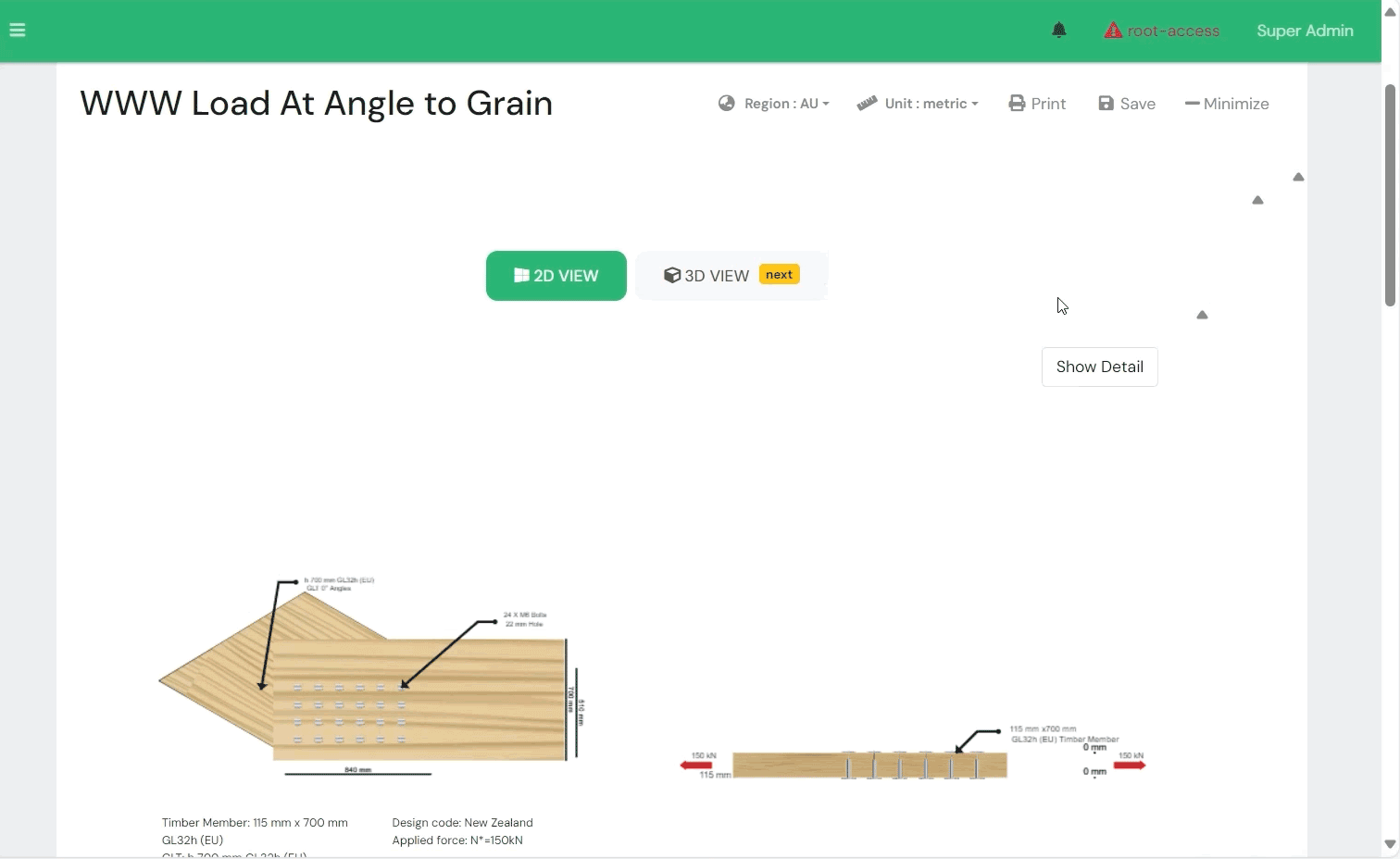In an exciting development for the timber engineering community, CLT Toolbox, has introduced 17 new dowel calculators. Over the past six months, a dedicated team has been meticulously working to develop these tools, designed to enhance the efficiency and precision of bolt and dowel calculations. These are now available with:
- Draft Eurocode 5
- Current Eurocode
- NZS AS 1720.1: 2022 (these are made freely available thanks to the partnership with Timber Unlimited announced last week)
- AS1720
The newly launched calculators are available for free to engineers in New Zealand, and they can be accessed globally through pro memberships. This expansion aims to support engineers worldwide by providing them with robust and reliable tools to streamline their projects.
The software includes comprehensive designs for large dowel bolts, adhering to the standards of Eurocode, Australia, and New Zealand. By integrating these calculators into their workflows, engineers can expect to improve their design accuracy and project outcomes.
This article provides a summary of the 17 dowel calculators as they can be fit into the following categories:
1 External Plates: Steel-Wood-Steel Connection



These calculators are available for situations where engineers encounter the need for external steel plates with internal timber. They support Steel-Wood-Steel (SWS) member configurations with dowel or bolt connections. The side steel plate can be positioned parallel to the grain, perpendicular to the grain, or at an angle (under tensile or compressive force) relative to the timber grain. The calculators enable users to select different design regions and codes. Additionally, they include 2D and 3D dynamic images with detailed descriptions such as member dimensions, grades, thicknesses, and bolt grades. These calculators offer options for various steel grades and timber materials such as GLT, LVL, and SG, complete with supplier data. Combining steel and timber in connections merges the strength of steel with the natural aesthetic and sustainability of timber, ensuring structural integrity while maximizing their respective benefits. The European Yield Model analytical method is employed for Eurocode and New Zealand standards in these calculators. These calculators serve as invaluable tools for analysis and design optimization, ensuring safety, and compliance with engineering standards.

2 Internal Plates: Wood-Steel-Wood Connection



These calculators are designed for engineers dealing with timber and steel plate connections, specifically supporting Wood-Steel-Wood (WSW) member configurations using dowel or bolt connections. The middle steel plate can be positioned parallel to the grain, perpendicular to the grain, or at an angle relative to the timber grain (under tensile or compressive force). The calculator incorporates various suppliers (Timberlink, ASH, CUSP, and Hyne), allowing users to manually input supplier grades and dimensions. WSW connection design involves a double shear case. These calculators offer options for different steel grades and timber materials such as GLT, LVL, and SG. For WSW connections, the angle between the steel member and steel plate is a user input. In these calculators, the analytical method follows the European Yield Model for New Zealand and Eurocode standards. The yield failure modes in European standards can dynamically change when the user adjusts the thickness and diameter of the bolt. The calculators facilitate the integration of various timber materials, empowering engineers to achieve innovative and sustainable structural solutions.
3. Wood-Steel Connection



These calculators are designed for situations where engineers require integration of timber with steel plates. They support configurations of Steel-Wood (SW) members with dowel or bolt connections. Steel plates can be positioned parallel, perpendicular, or at an angle relative to the timber grain, accommodating tensile or compressive forces. These calculators offer choices of steel grades and timber materials such as GLT, LVL, and SG, with options for supplier grade and dimensions. Users can input different angles between the steel plate and timber member for SW configurations. The SW connection design approach focuses on single shear cases. These calculators provide an output summary that summarizes all calculations and checks. Dimension checks verify criteria from standards, while the strength section includes calculations for design yield moment, rope effect, yield strength, and various brittle failures. The calculators use the European Yield Model for New Zealand and Eurocode standards for analysis. They are essential tools for analyzing and optimizing designs to ensure safety, efficiency, and compliance with engineering standards.
4. Plywood To Wood



Designed for Plywood-Wood connections, these calculators cater to scenarios where engineers require plywood alongside timber. They support configurations of Plywood-Wood (PW) members with dowel or bolt connections. The plywood can be positioned parallel, perpendicular, or at an angle relative to the timber grain, accommodating tensile or compressive forces. The calculator includes different suppliers (Timber link, ASH, CUSP, and Hyne), with options for supplier grades and dimensions manually input by the user. The PW connection design focuses on single shear cases. These calculators offer choices of different timber materials such as GLT, LVL, and SG. Users input the angle between the plywood and wood for PW configurations. Dynamic 2D and 3D images enable visualization of various bolt configurations (uneven, even bolt distribution, and circular bolt distribution). The calculators use the European Yield Model for New Zealand and Eurocode standards for analysis.
5. Wood To Wood Parallel and Perpendicular



Designed for wood-wood connections, these calculators cater to scenarios where engineers require wood alongside timber. They enable users to select different design codes and design requirements from the input variables. The calculators feature 2D and 3D dynamic images based on user input, detailing timber member dimensions, supplier grades, bolt diameters, and fastener grades. Configuration parameters are validated against design criteria through dimension checks. The output summary section includes checks for member configuration dimensions, yield failure verification, and various brittle failure modes such as row shear, block shear, group tear-out, and net tension based on user inputs and different standards. In the strength section, calculations cover design yield moment, rope effect, various yield failure modes, and brittle failure modes depending on whether the member is parallel, perpendicular, or at an angle to the grain. European yield failure modes dynamically adjust with changes in bolt thickness and diameter. These calculators serve as essential resources, enabling thorough analysis and optimized design to ensure safety and compliance with engineering standards.
6. Wood-Wood-Wood (WWW At Angle)


These calculators cater to scenarios where engineers require wood-to-wood connections, designed for Wood-Wood-Wood at Angle (Double Shear Case) and Wood-Wood at Angle Connections (Single Shear Case). For the WWW at Angle, users have the option to select parallel-to-grain embedment for the member, which can be positioned as either a middle member or side member, with the angle varying accordingly. Configuration parameters can be verified against design criteria through dimension checks. Like other calculators, both tools feature 2D and 3D dynamic images based on default or user inputs, detailing timber member dimensions, supplier grades, bolt diameters, and fastener grades. They accommodate different suppliers (Timberlink, ASH, CUSP, and Hyne) and allow manual input of supplier grades and dimensions by the user. The output summary section includes checks for member configuration dimensions, verification of yielding failure, and analysis of various brittle failure modes. In the strength section, calculations cover design yield moment, rope effects, different yielding failure modes, and brittle failure modes. European yield failure modes are dynamic and adjust as the user modifies bolt thickness and diameter.









